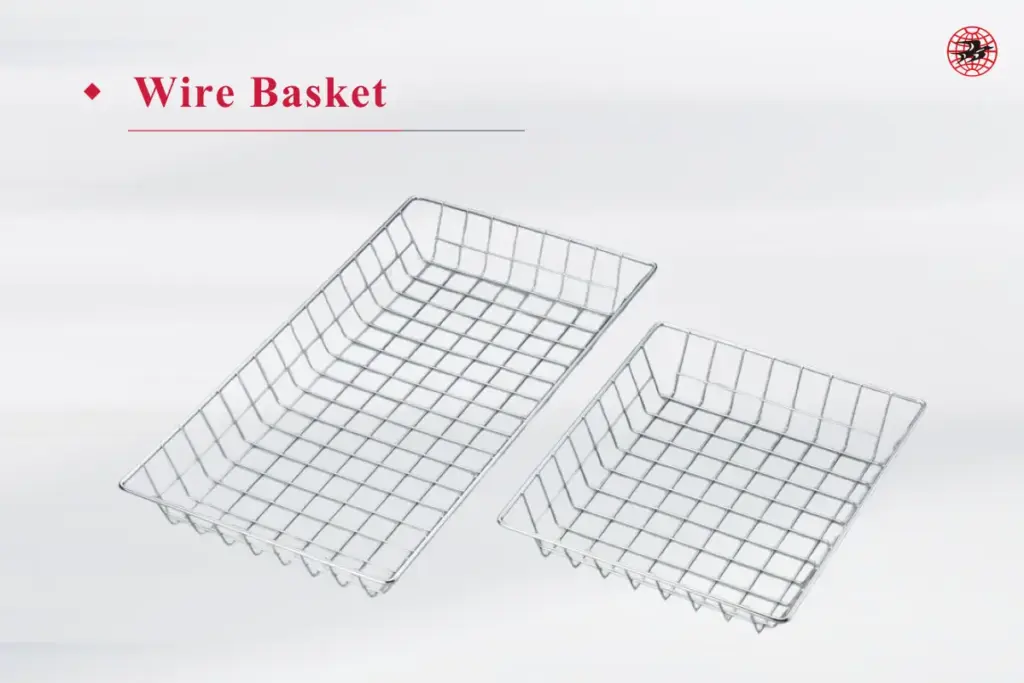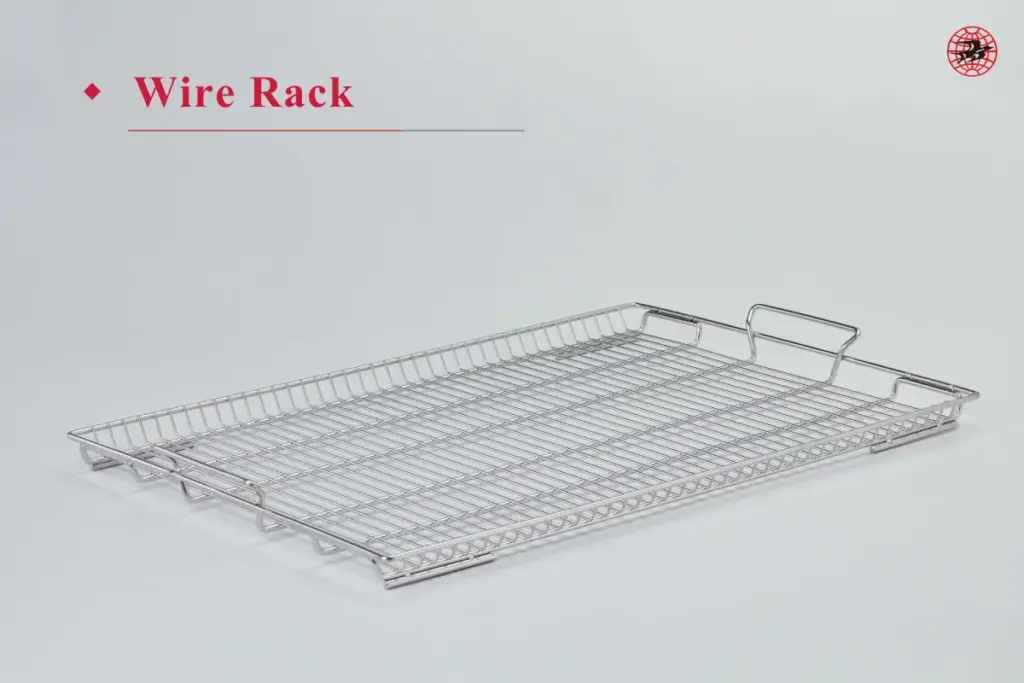What is Wire Forming?
Wire forming is the process of shaping metal wire into functional products through techniques such as bending, cutting, coiling, shearing, piercing, or compressing it into specific designs. The process often starts with a coiled wire that is straightened and fed into specialized machines to create the required form. Although the concept dates back to the Bronze Age, modern advancements have turned wire forming into a highly accurate and efficient practice, thanks to computer-controlled equipment.
Benefits of Wire Forming
One of the biggest strengths of wire forming is its versatility. It can produce both simple and highly complex designs, from S-hooks and springs to intricate parts used in the medical, automotive, and other industries.
The process is also cost-effective, as certain techniques generate little to no scrap material and require minimal tooling, keeping production efficient even at high volumes.
Modern CNC machines make it possible to achieve exact specifications and tolerances, offering both precision and customization. Beyond flexibility and accuracy, wire-formed components are also strong and durable, making them a reliable choice across demanding applications.
How Wire Forming Works: Process
Wire Selection
Every project begins with choosing the right wire. The metal type, gauge, and diameter are selected based on the application’s needs, whether that means high strength, flexibility, corrosion resistance, or electrical conductivity. Later, we’ll look more closely at the materials most often used.
Wire Drawing
Next, the wire is put through a drawing process, where it is pulled through a series of progressively smaller dies to make it thinner, longer, and stronger. To stop it from breaking, this is done step by step, with lubrication to reduce friction and sometimes heat treatment to keep it from getting too brittle.
Wire Straightening
Once drawn, the wire is passed through a straightening process to remove bends, kinks, and internal stresses. Since wire is usually stored and transported in coils, it must be straightened before forming. Typically, this is done using rollers, either manually or by CNC machinery, to ensure a consistent, straight wire ready for precise shaping
Shaping the Wire
At this stage, the wire is transformed into its final design. It may be bent into angles, curved into loops, cut to length, or coiled into springs. Some processes reduce diameter through swaging, while others increase thickness in targeted areas through upsetting. More complex techniques, like twisting, stretching, or extruding, can also be applied, depending on the requirements of the finished part.
Finishing
After shaping, finishing, and secondary processes are often required to meet the final specifications. This can include smoothing rough edges through chamfering, punching holes through piercing, or forming heads with cold heading. To improve durability and appearance, the wire form is often coated with protective finishes such as zinc plating, epoxy, paint, or powder coating. These not only guard against corrosion but also enhance the overall look and function of the product.
Common Wire Forming Methods
Wire forming can be achieved in several ways depending on the complexity, scale, and precision required. From simple hand-bent wires to advanced CNC-controlled machines, each method offers unique strengths. Here’s a closer look at the most common wire forming techniques used in manufacturing today.
Manual Wire Forming
Manual wire forming is the oldest and simplest method of shaping wire. It involves bending and shaping wire by hand, often with the help of manually operated bending machines. These machines typically include a hand lever and spindle, sometimes supported by high-torque gears to apply greater force. Depending on the setup, wire is shaped using draw or rotary dies. Manual forming is well-suited for prototypes and small production runs, where flexibility is more important than speed.
CNC Wire Bending
CNC wire forming uses computer numerical control to automate the bending, cutting, and shaping process. Wire diameters from 0.016 to 0.635 inches (0.4 to 16 mm) can be formed with ease. A digital 3D design is converted into instructions that guide the machine’s tooling with precision. CNC machines, powered by pneumatic, hydraulic, or electric servo systems, can bend wire up to 180 degrees with high repeatability. They also often include wire straightening before bending.
The advantages of CNC wire forming include precise, consistent results and flexibility to work with many materials such as stainless steel, copper, brass, and specialty alloys. It is also economical for prototypes or small runs since it requires little setup, though it may be slower than high-speed dedicated machines for large-scale production.
Coil Forming
Coil forming, sometimes called spring wire forming, is used to make springs and electrical coils. The wire is wound around a mandrel or core to create uniform loops, which are then cut to the required length. This process can produce compression springs, extension springs, torsional springs, or coils used in electronics.
Manufacturing electrical coils requires higher precision in winding to achieve exact resistance and inductance values, often relying on automated machinery. Coil forming can be used on its own or as part of more complex wire forms that integrate springs into the design.
Fourslide Forming
Fourslide forming, also known as multi-slide stamping, is a high-volume technique designed for speed and efficiency. It uses a horizontal press with four main slides arranged in a square, each equipped with tools that progressively shape the wire. Additional slides can be added for feeding, cutting, or extra forming steps.
Guided by cams, the machine performs bends in sequence, enabling the rapid production of intricate parts. Forming metal strips or wires from four sides simultaneously minimizes waste and ensures cost-effective efficiency for large production runs. However, due to its complex cam and tooling setup, it is less economical for smaller batches.
Hydraulic Forming
Hydraulic wire forming uses hydraulic motors to power rollers and tooling assemblies, delivering the torque needed to shape heavy-gauge wires and rods. This makes it ideal for demanding applications like automotive suspension components or construction reinforcements.
Hydraulic machines are often combined with servo motors and CNC systems to achieve precise results while maintaining high productivity. Once the forming is complete, parts are usually ejected automatically, supporting efficient mass production.
Pneumatic Wire Forming
In pneumatic wire forming, compressed air powers the mechanisms that feed, straighten, form, and cut the wire. This method is known for speed and efficiency, making it ideal for high-volume production of repetitive, uniform parts such as hooks, hangers, and fasteners. Pneumatic systems are valued for their fast throughput and relatively low maintenance needs compared to more complex systems.
Roll Wire Forming
Roll forming is a continuous process that shapes wire by passing it through a series of precisely aligned rollers. Each set of rollers gradually modifies the profile until the desired shape is achieved. This method is highly cost-effective for large production runs and can produce features such as grooves, chamfers, threads, undercuts, or collars.
Wire parts formed this way often gain extra strength and reduced springback, with smooth, rounded edges. Roll forming is commonly used in making automotive clips, clamps, and other high-strength components.
Common Materials for Wire Forming
Choosing the right material is one of the most important steps in wire forming. The strength, flexibility, resistance to corrosion, and even electrical or thermal conductivity of a finished part all depend on the type of metal used. Let’s look at the most common materials in wire forming and what makes each one unique.
Steel
Steel is by far the most widely used material because it combines strength, ductility, and affordability. It is essentially an alloy of iron and carbon, which increases toughness and fracture resistance. Different grades of steel are used depending on the application.
Carbon steel is a popular choice for springs and other high-strength parts. The more carbon it contains, the harder and stronger it becomes, although this also makes it more brittle. High-carbon steel wire is often called music wire, while low-carbon versions are more flexible and used for low-stress parts. The main drawback of carbon steel is that it rusts easily in moist conditions.
Galvanized steel solves this problem by coating carbon steel with a protective layer of zinc. This makes it far more resistant to rust, while retaining strength and cost-effectiveness.
Stainless Steel
Stainless steel is prized for its corrosion resistance and ability to endure high temperatures, making it ideal for medical equipment, food processing, and outdoor applications. Its durability comes from the chromium content, which forms a protective oxide layer on the surface.
Common Grades and Their Properties:
- Grade 304: A widely used, non-magnetic stainless steel with excellent corrosion resistance. It has a tensile strength of approximately 621 MPa and can withstand temperatures up to 1500°F (815°C).
- Grade 316: Enhanced with molybdenum, this grade resists chlorides and salt, making it suitable for marine and chemical environments. Its tensile strength is about 579 MPa, with a maximum operating temperature of 1400°F (760°C).
- Grade 434: A ferritic stainless steel with strong resistance to pitting. Nickel-free, it is more affordable than the 300-series grades and performs best below 1500°F (815°C).
- Grade 330: Engineered for extreme heat, capable of withstanding temperatures up to 1900°F (1037°C), ideal for high-temperature industrial applications.
Copper
Copper is instantly recognizable by its reddish-orange color. It’s soft, ductile, and incredibly conductive, both electrically and thermally. These properties make it the go-to material for electrical wire and components. Copper is also corrosion-resistant and develops a green patina over time when exposed to air. While it’s more flexible than steel, it isn’t as strong, so it’s often chosen where conductivity matters more than load-bearing strength.
Aluminum
Aluminum is prized for being lightweight, corrosion-resistant, and easy to form. It’s the third most abundant metal on Earth and naturally resists rust, making it suitable for outdoor and marine applications. However, pure aluminum is soft and prone to deformation, so in wire forming, it’s usually alloyed with metals like copper, zinc, or magnesium to boost strength and performance.
Brass
Brass, an alloy of copper and zinc, offers a balance of strength, corrosion resistance, and much of copper’s excellent electrical conductivity. It is typically composed of about two-thirds copper and one-third zinc, with small amounts of other elements like tin or iron sometimes added to enhance hardness and durability.
Brass is commonly used in decorative items, electrical connectors, and conductive springs. Bronze, another copper-based alloy, provides similar corrosion resistance and electrical conductivity.
Nickel and Nickel Alloys
Nickel and its alloys are used when wire parts must perform in tough environments. Nickel offers strong corrosion resistance and remains stable across a wide temperature range. It is often used in aerospace and medical applications where performance under heat and stress is critical. Unlike steel, nickel alloys are typically non-magnetic and poor conductors of electricity, which makes them useful for specialized parts that require these properties.
Applications of Wire-Formed Parts
Wire forming is often hidden in plain sight, yet it plays a crucial role in keeping everyday products functional, dependable, and safe.
In the medical field, surgical instruments, implants, and device components often rely on wire-formed parts made from stainless steel, which can withstand sterilization and repeated use. Similarly, in food processing, wire-formed baskets, racks, and shelving are fabricated from stainless steel to meet strict sanitation standards.
Wire forms are equally important in construction and automotive applications. In construction, they are used for reinforcing concrete, supporting both structural and decorative needs. In the automotive industry, springs, clips, brackets, and fasteners keep vehicles running safely and efficiently.
Beyond these fields, wire forming contributes to a wide range of products in aerospace, electronics, telecommunications, and even retail, such as display racks and shelving.
Now, let’s look at some of these commonly seen wire-formed parts and products:
Fasteners: Pins, Clamps, and Clips
Fasteners made through wire forming are essential in machinery and assemblies where parts need to be securely held in place. Pins and clips, such as cotter pins, split pins, bridge pins, and hairpin clips, are used to keep wheels or rotating parts attached to shafts and axles.
R clips, also known as spring cotter pins, snap into place to provide a firm grip, while linchpins serve a similar role by preventing wheels from detaching. Z clips are another example, often used to lock panels or signage securely in position.
Wire clamps are also widely used, especially hose clamps made from heavy-duty bent wire that apply even pressure to prevent leaks in plumbing and automotive systems. Even the everyday paper clip is a simple wire-formed fastener that relies on tension to function.
Hooks
Hooks are one of the simplest yet most versatile wire forms. S hooks and V hooks are ideal for hanging, lifting, and organizing, making them popular in retail, industrial, and commercial environments. J-hooks are common in construction and electrical wiring, where they help guide and support cables.
Variants like fishhooks or cargo control hooks often include coatings of rubber or vinyl to protect surfaces. Utility hooks go a step further, with threaded ends that allow them to be installed directly into wood, masonry, or other materials, making them a reliable choice for garages, warehouses, and workshops.
Springs
Springs are perhaps the most recognizable wire-formed product. They work by storing and releasing energy when compressed, stretched, or twisted. Compression springs, extension springs, and torsion springs are the most common types, each serving a wide range of applications.
In automobiles, springs play a vital role in suspension systems and tailgate supports. In electronics, conical springs are used for battery contacts, while aerospace and industrial equipment depend on specialized spring designs for safety and performance.
Wire Baskets

Wire baskets are widely used in industrial, medical, and commercial settings for storage, handling, and processing. Heavy-gauge welded wire baskets provide strength, ventilation, and visibility, helping to organize parts while allowing for easy washing and transport in manufacturing.
The medical field relies on baskets that are durable, smooth, and sterilizable, while the food industry uses corrosion-resistant stainless steel versions that can withstand constant cleaning to meet strict sanitation standards.
Wire Displays and Racks

Retailers frequently use wire displays and racks because they are durable, lightweight, and easy to move to high-traffic areas. These displays serve as point-of-purchase stands or general merchandise storage, combining practicality with visual appeal. To enhance durability and match store aesthetics, the wire can be powder-coated, painted, or plated.
Wire Guards, Screens, and Mesh
Wire forming also provides critical safety and structural components. Wire guards are used to shield sensitive equipment like HVAC fans, fire alarms, and robotic systems, reducing the risk of accidents and unauthorized access.
Wire screens and mesh are produced by weaving or welding wires together and are essential in industries that require filtration and sieving, such as mining and food processing. They also act as protective barriers and structural elements, often forming the basis for baskets and frames in construction projects.
Castaly—Your Trusted Wire Forming Manufacturer & Supply Partner
Now that you understand the versatility, working principles, different methods, and applications of wire forming, why not partner with a supplier who can turn those possibilities into real solutions? That’s where you find Castaly.
When it comes to custom wire forming, Castaly transforms ideas into durable, high-performance components. With decades of experience, we have the advantages needed to deliver precision and consistency across every project. Our team ensures that each wire-formed product meets strict quality standards, whether it’s a simple shape or a complex assembly.
We specialize in providing fryers, wire racks, wire baskets, and custom metal parts built precisely to your specifications. As a one-stop solution for offshore metal parts purchasing, we handle everything from sourcing to delivery. With lower costs, higher standards, and flexible manufacturing processes backed by strict quality control, Castaly stands as the stronghold for businesses that value accuracy, consistency, and on-time delivery.
Ready to bring your concepts to life? Contact us today to discuss your custom wire forming needs, or reach out on LinkedIn to connect with our team directly. With Castaly, your vision becomes reality.
Still evaluating? See why leading brands trust Castaly.
If you’re exploring your options, we’d love to show you what makes us stand out. Simply share your product drawings or specifications, and our team will provide a competitive quote with guaranteed quality and reliable lead times. At Castaly, we make it easy to compare, so you can see the difference in value, precision, and service for yourself.
